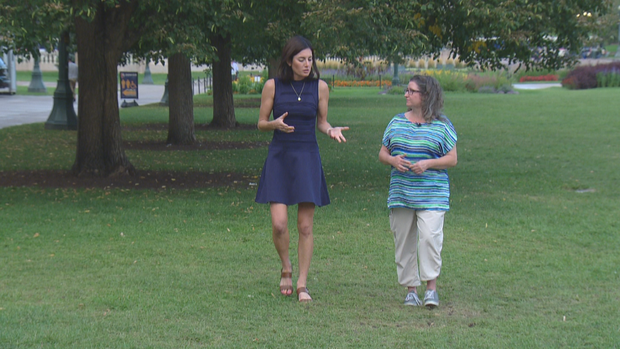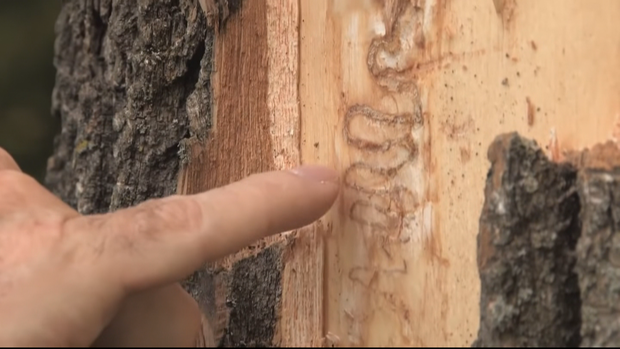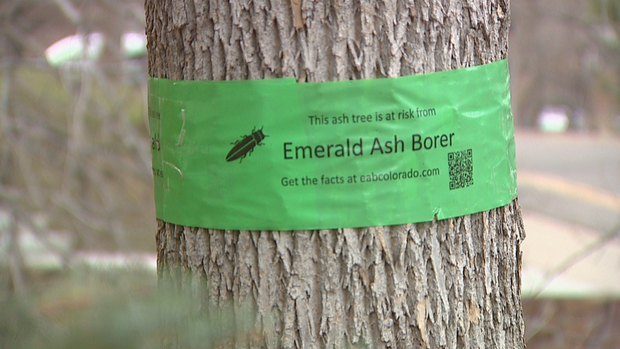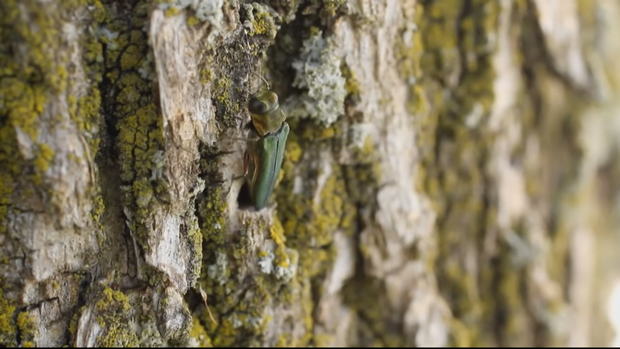Emerald Ash Borer Breaks Quarantine, Confirmed In Broomfield & Westminster
WESTMINSTER, Colo. (CBS4) - The City of Westminster has become the second city, outside of Boulder County, to confirm an infestation of a very determined pest: the emerald ash borer (EAB). It was first discovered in Boulder County in 2013 following the floods.
Experts have watched it slowly spread outside of the established quarantine zone.
"We've watched on the map spread through the city of boulder and now it's starting to hop from community to community in Boulder County, and it's made its way into Broomfield and now it's in Westminster," said Sara Davis, the Urban Forestry Manager for the City of Denver.
Davis oversees the care of the more than 2.2 million trees in Denver's urban interface. Of those, about 1.45 million are ash trees.
It was around five years ago when Davis launched a campaign called, Be a Smart Ash, a way to call attention to the growing problem.
"It's our way of being cheeky and fun to help engage the community around something that people think is kind of boring. BUGS!" laughed Sara.
The EAB is a completely different kind of boring. Despite a quarantine in Boulder County, the pest continues to spread naturally.
"If it's not people moving it, it can fly and travel on its own so it's just really showing us that we can trust all the advice we've gotten."
The Colorado Department of Agriculture and USDA Animal and Plant Health Inspection Service are now preparing to repeal the quarantine this winter, with a formal process to begin later this month.
The Colorado State Forest Service says it's not clear if the EAB arrived in Westminster by natural spread or via accidental human transport, but there are no plans for a quarantine.
City of Westminster forestry staff discovered the pest in ash trees near 128th Avenue and Zuni Street. They delivered the insect to the Colorado Department of Agriculture and Colorado State University experts, who first confirmed it as being EAB; it was then confirmed a second time this week by a national EAB expert in Brighton, Michigan.
Davis says the EAB is not spreading as fast in Colorado as it has in other parts of the country. She says it could be due to a number of factors including a dry climate. Still, Davis believes the spread to other areas is inevitable.
"I would go out on a limb and say yes. Probably within the next 10 to 15 years, but I don't have a crystal ball as far as when this little guy is going to show up in our jurisdiction."
While it's likely quarantines will no longer be part of management, there are other means in place to help slow the spread of the EAB in Colorado.
The Colorado State Forest Service says this includes chemically treating trees in affected communities, and bio-controls that prey on EAB now having established populations in Boulder.
An estimated 15% or more of all urban and community trees in Colorado are ash species susceptible to being killed by EAB – and a majority of these trees are on private land. EAB attacks and kills both stressed and healthy ash trees and is so aggressive that trees typically die within two to four years after becoming infested.
The Colorado State Forest Service has provided ways the community help:
EAB tips for Front Range Residents:
Determine now if you have any ash trees. Identifying features of ash trees include compound leaves with 5 to 9 leaflets; leaflets, buds and branches growing directly opposite from one another; and diamond-shaped bark ridges on mature trees. More information about a related app for mobile devices is available at csfs.colostate.edu/emerald-ash-borer.
If you have an ash tree, start planning. Decide if the overall health of the tree merits current or future treatment or if it would be best to remove and replace it with a different species. If you aren't sure, contact a certified arborist. If pesticide treatment is the preferred option, the applicator must be licensed by the Colorado Department of Agriculture as a Commercial Pesticide Applicator.
Recognize signs of EAB infestation. Property owners with ash trees should be on the lookout for thinning of leaves in the upper tree canopy, 1/8-inch D-shaped holes on the bark and vertical bark splitting with winding S-shaped tunnels underneath. Report suspect trees by calling the Colorado Department of Agriculture at 1-888-248-5535 or filling out their EAB Report Form at https://www.colorado.gov/pacific/agplants/eab-identification-and-reporting.
Be aware of EAB imposters. Other insects like lilac/ash borer, ash bark beetle and flat-headed apple tree borer may look like EAB or cause similar tree symptoms. For more information, visit www.eabcolorado.com.
Help prevent further spread of EAB. Do not transport ash or any hardwood firewood, or any other untreated ash wood products, to other locations. Boulder County and some surrounding areas are still under a federal E
The City of Denver is offering free leaf bags with tips on how to identify and care for your ash tree.









